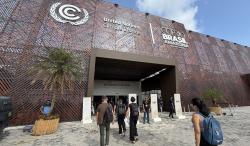At the World Health Assembly in May, 2022, 194 member states debated amendments to the International Health Regulations (IHR), the current global framework for preparing for and responding to health emergencies. Despite meeting fully in person for the first time since the outbreak of the COVID-19 pandemic, the member states made little progress in proposing solutions for what will be different for the next pandemic. The discussions were consumed by procedural questions, with few proposals for substantive change.
Introduced 53 years ago and last revised in 2005, after the severe acute respiratory syndrome outbreak, the IHR is a legally binding agreement that requires countries to improve their core capacities, including legislation, coordination, and surveillance, to detect and respond to national health emergencies.
The IHR also defines the steps for reporting disease outbreaks to WHO and disease control measures. However, when COVID-19 struck, the limitations of the IHR reporting system became clear.
The current IHR system has little power to ensure governments comply with their responsibilities or report accurately on their core capacities to prepare for and respond to health emergencies.
The IHR is governed by member state ministries of health, which often have little influence on the underlying problem of a lack of broader political will, including to commit resources that could improve core capacities in accordance with the IHR. Although attempts by WHO to devise improved methods of monitoring state compliance with IHR have led to modest changes, including the creation of voluntary external evaluations for state compliance with IHR and the Global Preparedness Monitoring Board, these efforts do not appear to have had much effect on state preparedness or response. The IHR also primarily addresses capacities at a national level, which does not improve global oversight and coordination.
In June, 2022, WHO's Intergovernmental Negotiating Body met, and will meet again from July 18, 2022, to develop a pandemic instrument, under the auspices of WHO, with the goal of having a new pact ready by May, 2024. Some states have been reluctant for the instrument to be a legally binding framework convention because it would require ratification by every member state, which could be a substantial political hurdle. Instead, many states support amending the IHR or adopting new regulations because regulations can automatically be entered into force without the cumbersome ratification process. States can opt out of any amendments they do not agree with, making the commitments less controversial to their domestic audiences, however, no state has ever done so.
A new WHO instrument has the potential to make a difference to future disease outbreaks,but even if the instrument is legally binding, a WHO instrument is inadequate. Pandemic governance must be elevated from WHO to the level of the UN General Assembly, in which countries are represented by their heads of state. When the Security Council was hamstrung by Russia's veto after Russia invaded Ukraine earlier in 2022, a vote by the General Assembly became an important political forum for dissent and disapproval. Although a UN vote is not legally binding, it does imply a higher level of political weight than WHO, and would place public health in a broader context of international law, security, trade, and human rights. WHO Director-General, Dr Tedros Adhanom Ghebreyesus, has proposed the creation of a global health emergency council, which would engage with heads of state, however, his proposal for oversight by the World Health Assembly is unlikely to be politically acceptable because the World Health Assembly is a forum for health ministries who report to heads of state, not the other way around.
A treaty at the UN General Assembly level can allow effective monitoring and verification mechanisms to manage sovereign considerations and trigger a high-level political response. The pronounced influence of low-income and middle-income countries at the UN General Assembly would also ensure that equity is a main focus of the treaty. Lessons learned from other treaty mechanisms,such as human rights and the control of chemical and nuclear weapons with shadow reporting from non-state entities and in-country inspections, could be applied to health emergencies to enhance compliance. UN General Assembly instruments can also be adopted quickly when there is political will and momentum to do so. For example, within 5 months of the Chernobyl disaster, the Convention on Early Notification of a Nuclear Accident was signed by heads of state, and a month later, the treaty entered into force.
The universality and severity of COVID-19 was a missed opportunity to provide the political motivation needed to actualise reforms to the health emergencies preparedness and response framework that were long overdue.But now the headlines have shifted away from COVID-19: inflation is high, energy prices and food insecurity are increasing, and Russia is at war in Ukraine. Although the emergence of competing political priorities was expected, it highlights the importance of maintaining what momentum remains. If we stop with an instrument at the level of WHO, we will miss the political and transnational dimensions of pandemic preparedness and response.
Now that the World Health Assembly has concluded and the pandemic instrument talks move forward, we cannot give up before we begin—no matter how much the political attention shifts.
What we learned from COVID-19 is that data and evidence play too small a role in decision making, which means that we need to focus less on what states should do and focus more on what they did not do, including why they did not comply with the IHR during the pandemic. An important step to prepare for future disease outbreaks is committing to a treaty that keeps the issue elevated at the head of state-level; so that states are ready to live up to their commitments and work together in a coordinated response when the next pandemic hits.
We declare no competing interests.
***
This article is republished under a Creative Commons Attribution-NonCommercial 4.0 International license. Read the original article the Lancet Global health Journal
Suggested citation: "Why We Still Need a Pandemic Treaty," United Nations University, UNU-IIGH, 2022-07-18, https://unu.edu/iigh/article/why-we-still-need-pandemic-treaty.



